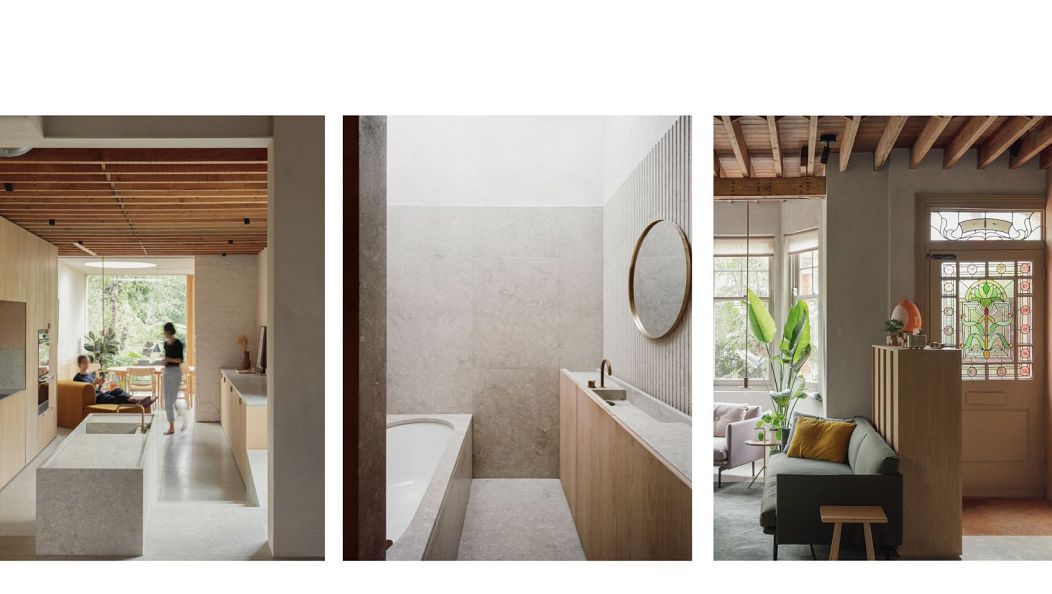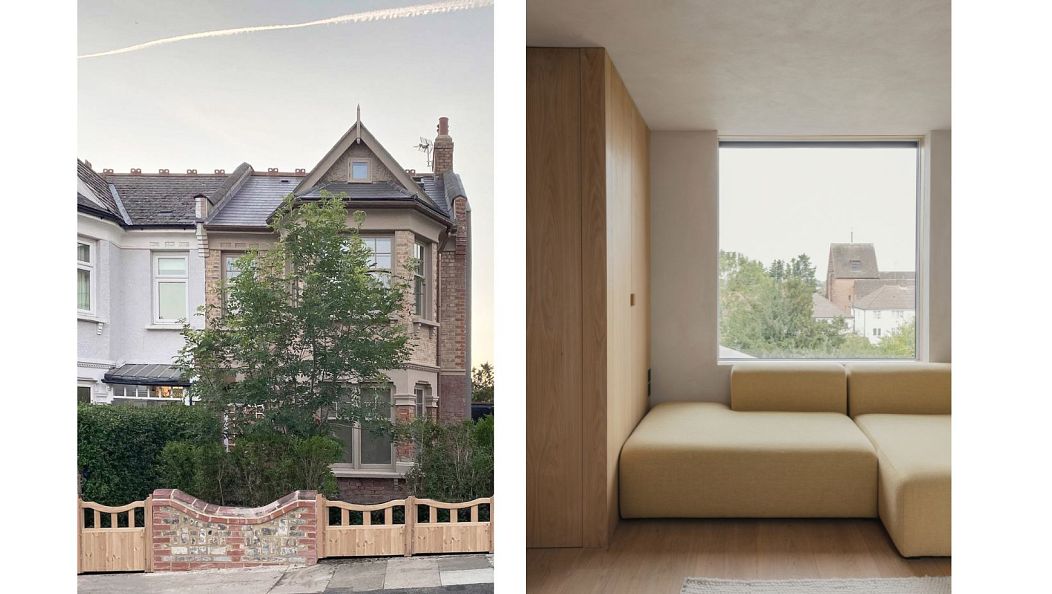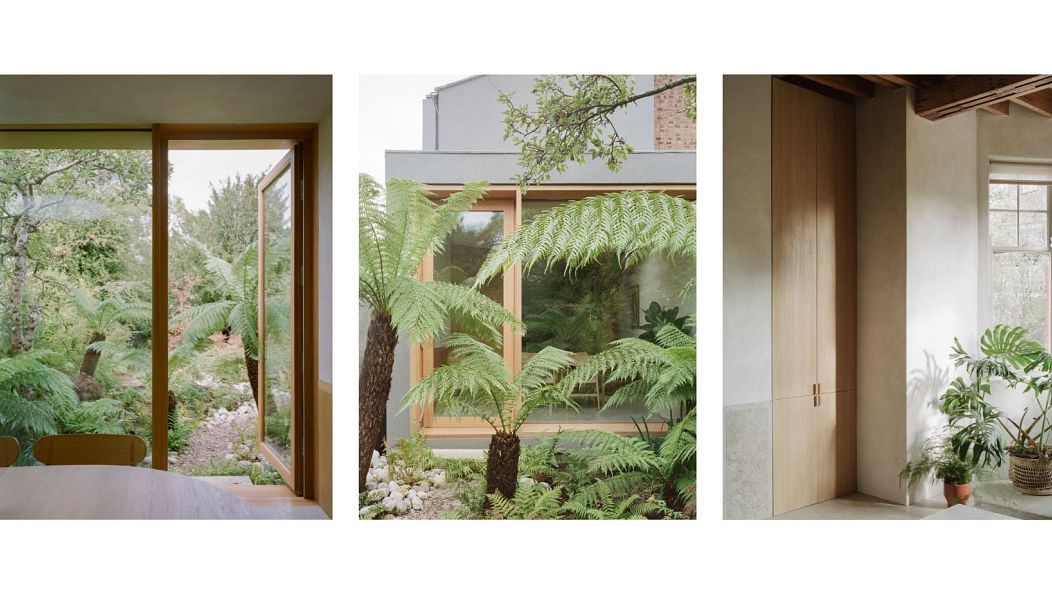Designers and their homes: London's Low Energy House
Want to know what objects of desire or furnishing and fittings designers choose to put in their homes? Euronews Culture starts a new series by taking a look inside architect Ben Ridley's low energy house in London.
Living in a low energy house is becoming increasingly popular - and for good reason.
As we continue to face increasing climate change-related challenges, many people are looking for ways to reduce their environmental impact and live more sustainably.
One effective way to do so is by living in a low energy house, designed to significantly reduce energy consumption and minimise the use of non-renewable resources. In addition to being better for the planet, a low energy house can also have significant benefits for the homeowner, including lower energy bills, increased comfort, better indoor air quality and improved overall wellbeing.
Low energy houses are becoming increasingly popular in the design world, as architects race to create energy-efficient homes. Ben Ridley, architect and founder of Architecture for London, has taken this idea and run with it, in impressive style.
Low energy, high living
His Low Energy House in London's desirable Muswell Hill is an excellent example of how environmentally-friendly housing can be achieved without sacrificing comfort or design. Ridley has lived in the home since the completion of its refurbishment in February 2021. He told Euronews Culture, “I've worked on lots of similar refurbishments and extensions for clients, but this was the first time that the practice and I made a commitment to a low-energy design from the outset. This project aims to be an exemplar for the sustainable refurbishment of a typical terraced home in London, with a constrained budget”, adding, “Low Energy House is a test case for what can be achieved with a retrofit of an ordinary terrace house on a small budget. Small budgets are crucial to scaling nationally”.
The refurbishment focused on reducing the energy use of the home and, as a result, making it less wasteful as well as more comfortable. The refurbishing process took more than eleven months to complete, with the COVID-19 pandemic causing delays. Issues with damp, caused by non-breathable cement-based renders and plasters, were resolved and fresh air circulation was improved, making the home a healthier environment to live in.
Ridley explains the system in place in the Low Energy House “filters the incoming air, removing pollen, diesel particulates and NOx to create a healthy indoor environment. Cold bridges were assessed, reducing the risk of condensation and mould growth, and removing the damp issues”. He tells Euronews Culture that a second phase of work is planned for the near future, which will consist of an installation of renewables to aim for net zero.
Even before these extra changes are made, the result of the work to the house is a beautiful, contemporary and minimalist interior that is surprisingly spacious. The open-plan living spaces on the ground floor create a warm and inviting family environment, with an abundance of natural light. The limestone flooring throughout the house, with its natural texture and patterns, is one of Ridley's favourite features of the property.
The interior of the house is entirely different to what one might expect when looking at the typical Edwardian exterior. Ridley explains that visitors often expect the house to be a standard set-up as is the case with many properties from the period and, he says the outside, including the front facade and original Edwardian front door, were carefully refurbished to blend in with the rest of the terraced houses on the street.
In actual fact, the inside of the house hadn’t been refurbished since the 1970s - and boasted floral carpets and flock wallpaper - so the transformation has been huge. Ridley says, “People usually expect to see a decorative Edwardian hallway when they walk into these kinds of houses, with the space being split up into a series of small rooms rather than one large continuous volume”, but the very different, ultra modern, innovative design and attention to detail have won the hearts of these visitors.
They’re also impressed with the large garden at the back of the house. Ridley tells us that the design was intended to add to the modern look of the home’s interior, saying, “I planted shade-loving plants like ferns, tree ferns and acers. I love the jungle feel and it really seems like an escape from London”.
Ridley is committed to reaching not just those lucky enough to see his home and garden in person, but the entire United Kingdom. The transition to low-energy housing is essential not only to meet the UK's legal obligations to achieve net zero carbon emissions by 2050 but also for creating more sustainable and comfortable homes for future generations.
For those wishing to emulate the Low Energy House, Ridley suggests that using natural materials with natural finishes can be an excellent starting point. If possible, he says it’s best to work with an architect, as “a full renovation and extension with good design quality to low energy standards takes a considerable effort and a high level of knowledge”, although it’s also fairly simple and not too costly to make small changes which can have a big impact.
You can learn more about the Low Energy House and Ben Ridley's work here.













